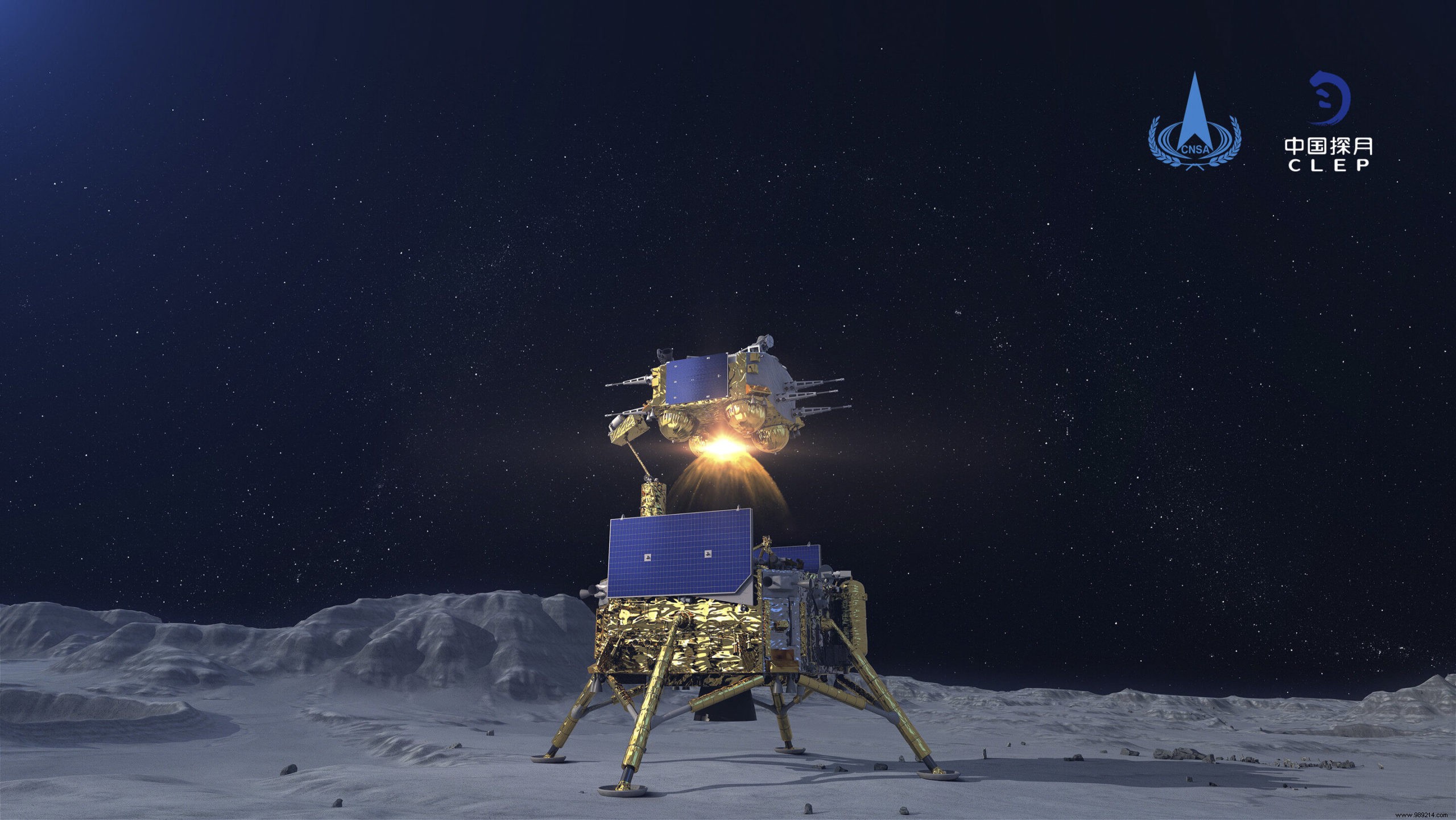In December 2020, China's Chang'e-5 mission brought 1.731 kg of lunar rock back to Earth. It was the first return of samples from the Moon in 44 years. As reported in the journal Science, early analyzes show that the material is much younger than the Apollo samples.
China has already landed several landers and rovers on the lunar surface as part of its exploration program. The Chang'e 5 mission, the latest, was perhaps the most ambitious. Like the Apollo missions fifty years ago, it aimed to bring samples back to our planet. The craft landed successfully nearly two years ago and a few weeks later returned nearly two kilograms of rock.
For its Chang'e 5 mission, China had set its sights on a large volcanic deposit called Oceanus Procellarum , considered one of the youngest areas of the lunar surface. But how old is he exactly?
The age of a rocky body can be estimated based on the number of craters. Concretely, the longer a body has existed, the more its surface is bombarded. However, this is not a very precise measurement. For example, so far estimates based on the number of craters in the region have ranged from 3.2 billion years old to just 1.2 billion .
This time, the absolute age of these new samples could be determined by radiometric dating. It is a method to calculate the relative proportions of particular radioactive isotopes (elements with more or fewer particles in the atomic nucleus than the standard substance) contained in rocks.
The samples used for the new study contained a mixture of several minerals (clinopyroxene, plagioclase, olivine, quartz, cristobalite and ilmenite). On this point, the overall composition is consistent with other volcanic deposits on the Moon. In contrast, the results indicate that one of the samples was 1.893 ± 0.280 billion years old and the other was 1.966 ± 0.059 billion years old . The combination of all these data produces an age of 1.963 ± 0.059 billion years . For comparison, all of the volcanic rocks collected by Apollo were over three billion years old.

This new work is important for several reasons. First, it is now possible to study samples from a period of lunar history that we did not have before. Here, the researchers did not isolate any evidence of high concentrations of radioactive heat-producing elements in the mantle that could have driven the eruption that delivered this "young" material to the surface. Other explanations will therefore be necessary to solve this mystery.
The second important aspect of this study is that the Moon can be used to refine our models aimed at better understanding the surfaces of other planets.